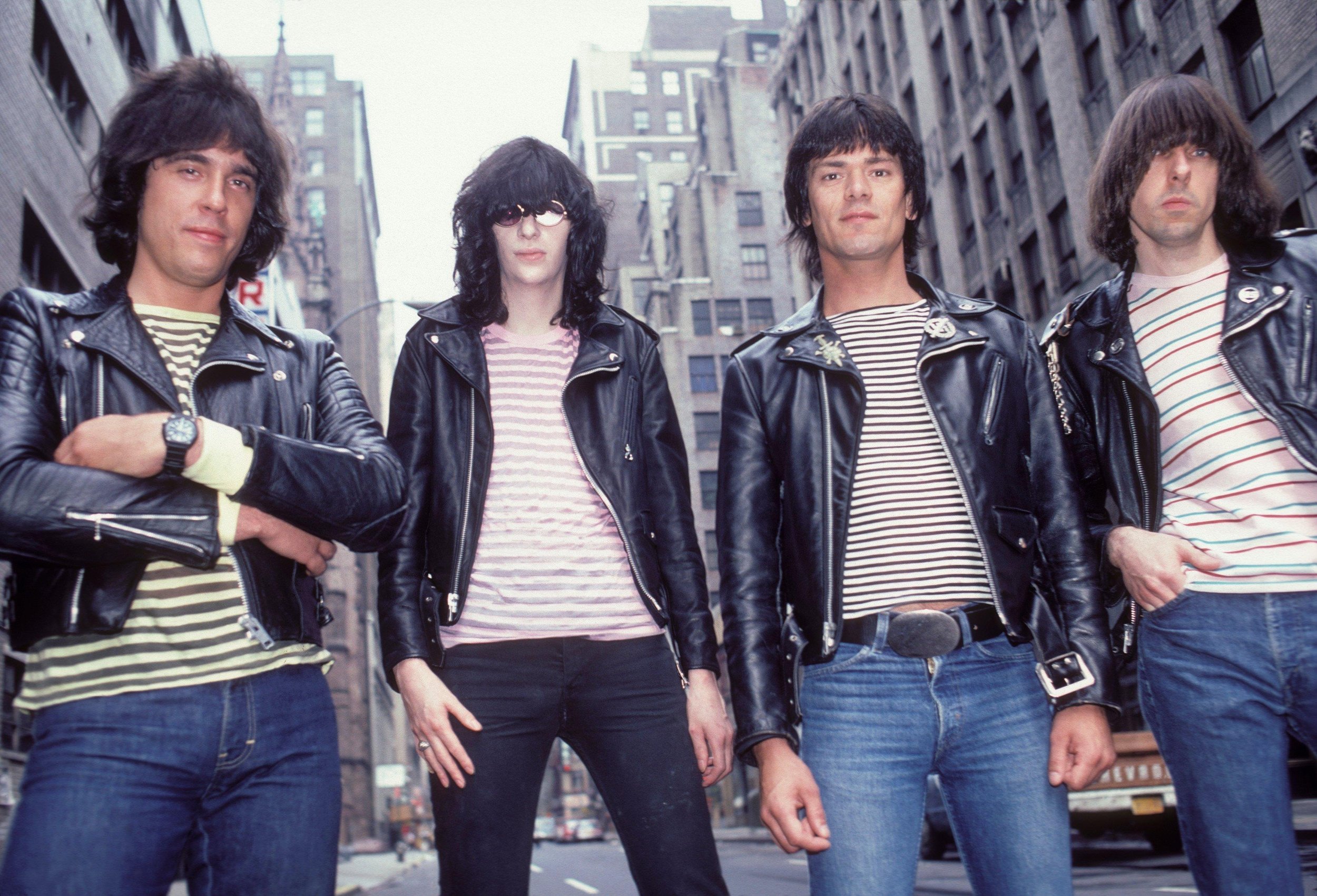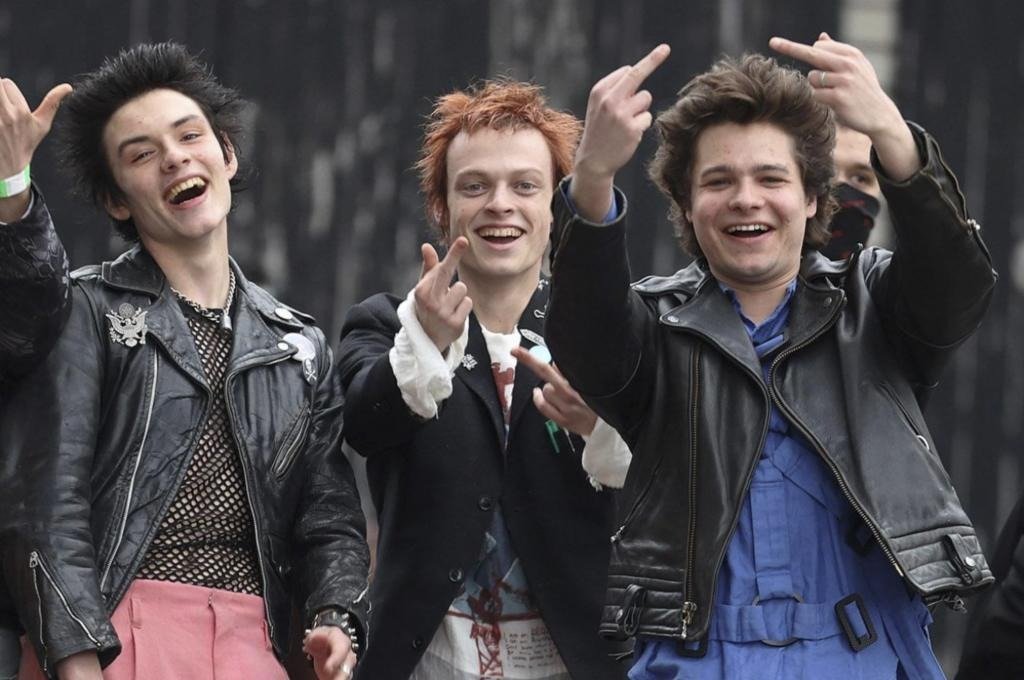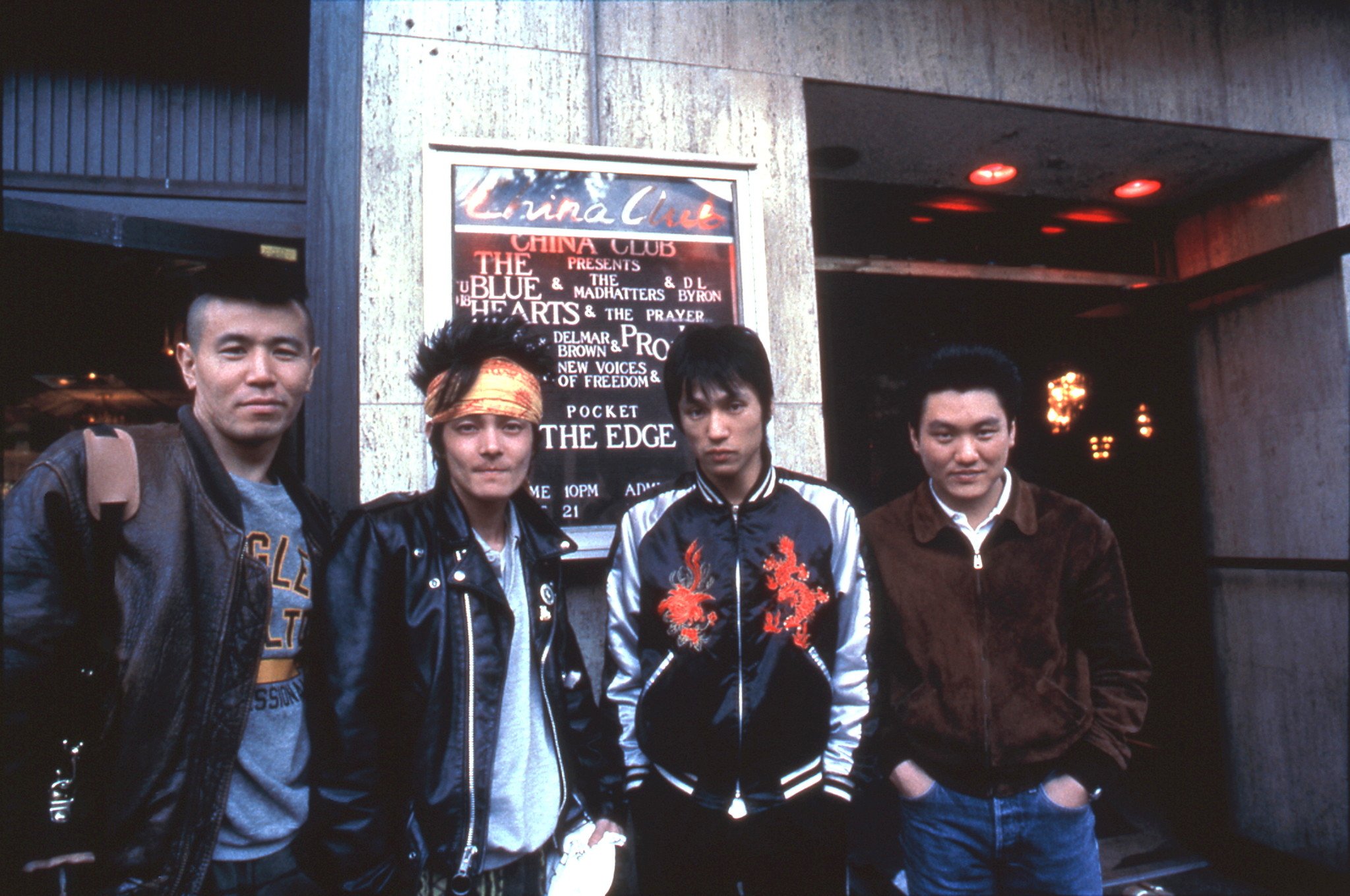The Sabukaru Guide to Japanese Punk Music

In the late summer of 1969, Iggy Pop and his band dropped their debut eponymous album, The Stooges: the 70s had begun, and with it an entire generation of bands worldwide Japan included, that challenged political, social, and of course musical conventions.
Building up to the fever pitch in 1969, during the early 60s, rock had been evolving with progressively more hardcore sounds: starting from the hippie movement evolving into the British Invasion, transitioning to rise of garage rock, and finally, to “punk” as we know it today.
Though earlier rock had also sought an outlet to denounce authority and embrace anarchism, the artistic expression of this generation of outcast youth turned away from the free-love sentiments of the prior years, towards angst and violent rebellion.
The genre had palpable aggression and provoked, rather than pacified, the general public in an attempt to influence their more conservative ideology.
Punk was quickly condemned by traditionalists as profane, only fueling the genre’s propensity for individuality and the rejection of societal norms.
This was especially true in Japan, a collectivist country where deviancy is heavily frowned upon, particularly at a time in which waves of youth-led protests challenged the country’s institutional and social conventions.
The genre began taking off among Japanese youth in the early 1970s who were influenced globally by successful groups such as The New York Dolls championing this new contemporary rock sound.
Existing bands in Japan started embracing an anti-establishment spirit through their lyrics and antics. Local avant-garde and experimental rock groups in particular took a liking to this new ethos.
Zunou Keisatsu
In August of 1971, a collective of various rock, jazz, folk, and blues bands, along with a crowd of young protestors, gathered for three days at the construction site of Narita Airport.
The bands played music in protest of the government’s displacement of local farmers and residents for the highly controversial new megaproject, Narita Airport which still stands today a major transport hub.
One group involved was Tokyo band Zunou Keisatsu [Brain Police].
The band advocated a staunch left-wing anarcho-communist sentiment through their anti-authority lyrics, played over an unorthodox style of heavy folk rock instrumentation.
The following year in 1972, the band released an eponymous debut trilogy of tapes in this style.
The Japanese government pressured the cancellation of the projects’ distribution over fears that the group’s messaging could fuel the ongoing protests the country faced by indoctrinating Japanese youth.
In spite of this backlash, and though stylistically the genre was still in its infancy, Zunou Keisatsu laid the groundwork for punk’s rebellious dogma in Japan over the next years, acting as a dog whistle for Japanese activists, and quickly establishing punk as a major cultural force across the country.
Tokyo Rockers
By the mid 1970s, punk had truly found its character, both visually and sonically. Punk bands overseas such as The Ramones and Sex Pistols began rocking piercings, tight denim, and leather jackets.
It was around this time a collective of various Tokyo-based alternative rock bands [such as Friction, Lizard, and Mirrors] became inspired by the newfound success of the genre, and joined forces under the name “Tokyo Rockers” to perform and record punk music at venues around Tokyo: notably S-KEN Studio in Roppongi and Loft Live House in Shinjuku and Shimokitazawa.
The group merged the harder sounds and themes of these foreign punk contemporaries with accessible pop and rock & roll, resulting in a unique genre-bending blend known as “new wave”, a style with which bands such as The Police had previously found overseas radio success.
With less provocative lyrical content and more familiar instrumentation, the Tokyo Rockers helped to bring punk more mainstream visibility in Japan through this unobjectionable approach to a genre so inherently controversial.
Kansai No Wave
Back in the US, a fresh style known as “no wave” was being born. This scene strived to stay true to punk’s esoteric mantra, identifying as a direct rejection of new wave.
Considering the recycling of sounds that are palatable to the mainstream to be irreverent, no wave artists instead embraced performance art, improvisation, nihilist philosophy, and obscure subgenres; key players in the scene often dabbled in free jazz, art pop, ska, and noise.
Long predating this, as far back as 1969, Kyoto band Murahachibu [“judicial ostracism”] had been performing a brand of hard rock which similarly put heavy influences on improvisation, performance antics, and the noise genre. The group’s legacy had been inspiring and influencing musicians around Kansai [Western Japan] for years.
The advent of no wave in Japan’s punk scene in the late 1970s only built upon these regional traditions, and no wave took off as a subgenre principally associated with Kansai, particularly contrasting Tokyo’s affinity for new wave.
This especially became the case in 1978, when a collective of no wave bands [such as INU, SS, and Ultra Bidet] from Kansai began to perform in Tokyo. These concerts sparked a rivalry between the Kanto and Kansai regions that would last through the 1980s.
Anarchy
Meanwhile, in Eastern Japan, the Tokyo punk scene was rapidly evolving with a resurgence of politically charged themes cropping up around the region.
The band Anarchy [or “亜無亜危異”] was formed just north of Tokyo in Saitama by five high schoolers in 1978.
Inspired by the Sex Pistols’ anti-monarchist track, “Anarchy In The UK”, the group similarly openly denounced the Japanese Imperial Family in their music, and called for a populist revolution of the people.
These attitudes were promoted on the group’s 1980 debut eponymous album, the release of which caused a substantial right-wing riot to break out outside the office of the band’s label.
Though the band’s messaging certainly sparked outrage in Japan, the tape’s instrumentation borrows many of the familiar pop-inspired sounds popular in Tokyo during this era, creating an infectiously fun atmosphere not unlike Sex Pistols.
SS
As the Japanese scene continued to grow and diversify, bands continued to experiment with new styles of punk, reinventing the genre from the inside out.
One punk band who’s unique creative process gained a legendary status for this was SS.
SS played at very high speeds with visceral vocals and contentious messaging, quickly finding success in this lane.
This genre later be labeled as “hardcore”.
Though credit towards the invention of hardcore is highly debated, SS is widely accepted to have been among the first to perform the style in 1978, leading some to claim they were the first.
Throughout the following decade bands such as Bad Brains and Black Flag would go on to generate heavy craze in the US recording in this style, influencing rock music as a whole for years.
The Roosters
The Roosters formed in Fukuoka, outside the pre-established scenes of Tokyo and Kansai, inspired by a deep interest in a wide range of British and American blues and rock and roll, even naming themselves after the blues standard “Little Red Rooster”.
Their sound on their 1980 debut eponymous album reflected this, with heavy influences from mid- century Southern U.S., British invasion, and surf rock.
Their easily approachable sound on this tape garnered them immediate success, and with their unique blend of genres the band came to make inroads with the Tokyo new wave scene, occasionally performing alongside the Tokyo Rockers.
Being exceptional instrumentalists, The Roosters would go on to become among the most commercially successful Japanese punk [and rock, more broadly] bands of all time, performing on-and-off with various rosters over the past decades.
Hijokaidan
Hijokaidan [“emergency staircase”] started out as Rasenkaidan [“spiral staircase”], a mildly successful punk outfit firmly established alongside aforementioned Kansai contemporaries in the no wave scene.
During a studio session in 1979, the band began improvising with heavy noise influences in a uniquely challenging form of free jazz.
The resulting sound was brutal and loud, with ear-splitting static and distortion over chaotic vocals and performance antics. These early years would go on to solidify many of the mantras of the Japanese noise scene.
Following this creative shift, the group changed their name to Hijokaidan, feeling “emergency staircase” better suited their new hardcore sound.
The band’s wild performances following this change in particular would go on to deal the band a good deal of attention from the local underground music scene with on-stage urination being a widely celebrated recurring interlude. The stage and crowd were also often filthy with debris, trash and human waste which were commonly flung around the venue.
Despite the band’s noise inspired sound garnering skepticism from even the most hardcore punks of the time, Hijokaidan rightfully amassed a reputation as one of the most prolific trailblazing bands of the time in both the no wave and noise subgenres.
The Stalin
In 1980, a young socialist activist Michiro Endo founded The Stalin, a name he chose for its incendiarism during a time of particularly high anxiety surrounding communism and Sovietism in Japan.
The highly divisive band’s arrival into the Japanese punk scene represents a cultural boiling point. For years, as punk had been gaining a loyal following among youth, the genre and its subculture was a point of immense controversy among more conservative, often older Japanese people, and The Stalin served to once again ignite this culture war.
Breaking into the scene with their 1981 debut EP, Stailanism, the band was immediately hated as a traitorous stain on Japanese values, and simultaneously beloved as one of the most compelling new punk bands to come from the scene, especially upon the release of their critically acclaimed 1982 follow-up, Stop Jap.
Hanatarash
Osaka band Hanatarash built upon the noise punk scene that Hijokaidan had established in the region a couple years earlier, elevating the sounds further with even more aggressive improvised grindcore-inspired sound and out-of-control performance antics.
Infamously, the band once cut a dead cat in half with a machete and threw the mutilated carcass into an Osaka crowd of concert goers in the early 1980s.
Band frontman Yamantaka Eye quickly became notorious; for a time even getting banned from every venue in the Japan after driving a backhoe through the rear wall of a stage and threatening to throw a lit molotov cocktail at it.
Hanatarash disbanded soon after, and Eye started Boredoms, with some members from Hanatarash and other Osaka noise bands following.
Boredoms went on to be widely successful with a more mellow and minimalistic sound, which would come to be known as “power electronics”.
G.I.S.M/ギズム
Members of G.I.S.M from left to right: Kannon [Cloudy] Matsuo, Salevi Yokoyama, Tohru “Monamour” Hiroshima, and Randy Uchida
G.I.S.M was formed in 1981, with their debut live performance in front of crowds of rowdy students at Tokyo University. Known for on stage antics that would most definitely get them banned from stages today, including physically assaulting and even jumping into audience mosh pits with a chainsaw their music expressed equally violent, unpredictable, and energy filled sentiments perhaps leading them to become one of the first Japanese crust punk bands. In line with their anti-authority ethos G.I.S.M is a well known act, with little photographic documentation. Its lead singer Sakevi Yokoyama is not too found of having his photo taken or the press in general even landing him some criminal charges due to his assault on people who have tried to do so covertly. Other band members include: bassist Kannon “Cloudy” Masuo, drummer Tohru “Monamour” Hiroshima, and guitarist Randy Uchida. After the passing of Randy Uchida from stomach cancer in 2001, the band announced they would be on a hiatus which still continues today.
The Blue Hearts
The Blue Hearts debuted in 1987, and brought in a new era of Japanese punk, truly bridging the gap between generations, being well known [and well liked compared to most similar bands] throughout late 1980s to mid 1990s.
The group’s style complimented the now storied Japanese punk scene, while also featuring emotional ballads, upbeat melodies, and more traditional instrumentation.
This represented not only a change in punk, but a nationwide cultural shift as well.
Finally, the wider Japanese general public had come to embrace the country’s long rejected leather-donning punks, and found true artistry in their music.
The Japanese punk scene remains active in the 21st century, with bands continuing to play everything from radio-friendly pop punk, to esoteric noise rock.
It is practically impossible to find a Japanese rock band today that was not heavily influenced by the rich culture and history of the early punk and experimental rock scene.
Punk is undeniably among the most influential Japanese genres and subcultures of all time; aesthetically, sonically, and ideologically.










